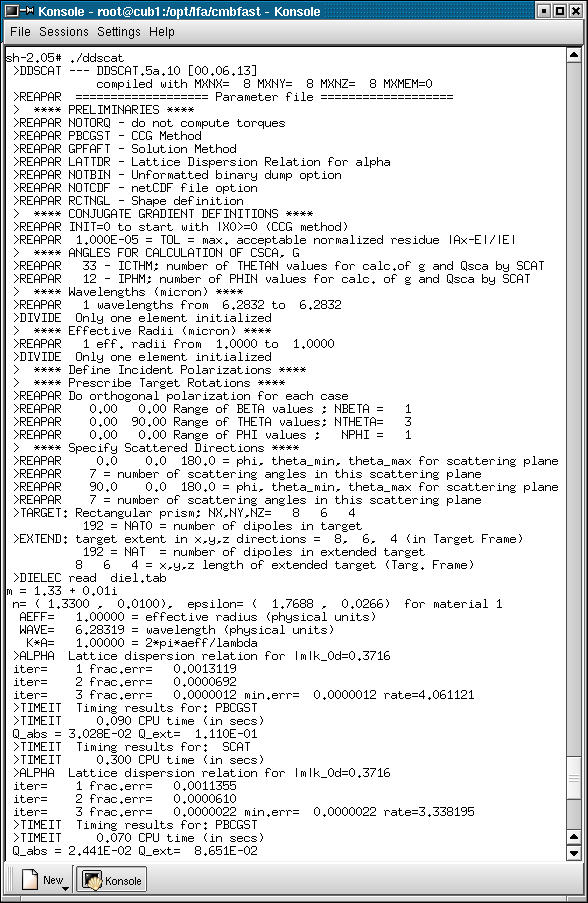Contents
Previous
Next
DDSCAT is a FORTRAN program to calculate scattering and absorption of
electromagnetic radiation by arbitrary targets
Version : 5a10
Author(s) : Bruce T. Draine (draine@astro.princeton.edu) , Piotr J.
Flatau (pflatau@ucsd.edu)
License : GPL
Website :
ftp://astro.princeton.edu/draine/scat/ddscat/
Disk space required for installation is 4.05 Mb
The following printable documents will be installed :
- /opt/lfa/doc/DDSCAT.ps
- /opt/lfa/doc/ddscat.ps
Summary
DDSCAT is a FORTRAN program to calculate scattering and absorption
of
electromagnetic radiation by arbitrary targets using the "Discrete
Dipole
Approximation" (DDA). In this approximation the target is replaced
by
an array of point dipoles; the electromagnetic scattering problem
for the
array of point dipoles is then solved essentially exactly. The DDA
was
apparently first proposed by Purcell and Pennypacker (1973). DDA
theory is
reviewed and developed further by Draine (1988), Draine and Goodman
(1993),
and recently reviewed by Draine and Flatau (1994) and Draine
(2000).
DDSCAT.5a10 is a FORTRAN implementation of the DDA developed by the
authors.
It is intended to be a versatile implementation, suitable for a
wide variety
of applications ranging from interstellar dust to atmospheric
aerosols. As
written, the code should be usable for many applications without
modification,
but the program is written in a modular form, so that
modifications, if
required, should be fairly straightforward. The current version of
DDSCAT
uses the DDA formulae from Draine (1988). The code incorporates
Fast Fourier
Transform (FFT) methods (Goodman, Draine, and Flatau 1991). The
Lattice
Dispersion Relation (LDR) prescription (Draine and Goodman 1993) is
used for
determining dipole polarizabilities.
At present the user may choose among different FFT implementations:
(1) FORTRAN implementation (FOURX) from Brenner (1969);
(2) FORTRAN implementation (CFFT99F) from Temperton (1983);
(3) FORTRAN implementation (GPFA) from Temperton (1994);
(4) the native vector library implementation (C3DFFT) on Convex
computers.
To facilitate comparisons of the different FFT options, we provide
a
separate FORTRAN program TSTFFT which will provide timing
information for
comparison of the 3 FORTRAN FFT options. This will enable the user
to make
the best choice of FFT for the particular hardware/architecture
being used.
The current release of DDSCAT includes an option to calculate
torques and
transverse forces on targets, as described in Draine and
Weingartner (1996).
Detailed instructions for using DDSCAT are contained in the User
Guide for
DDSCAT.5a10.
Screenshots

Contents
Previous
Next

